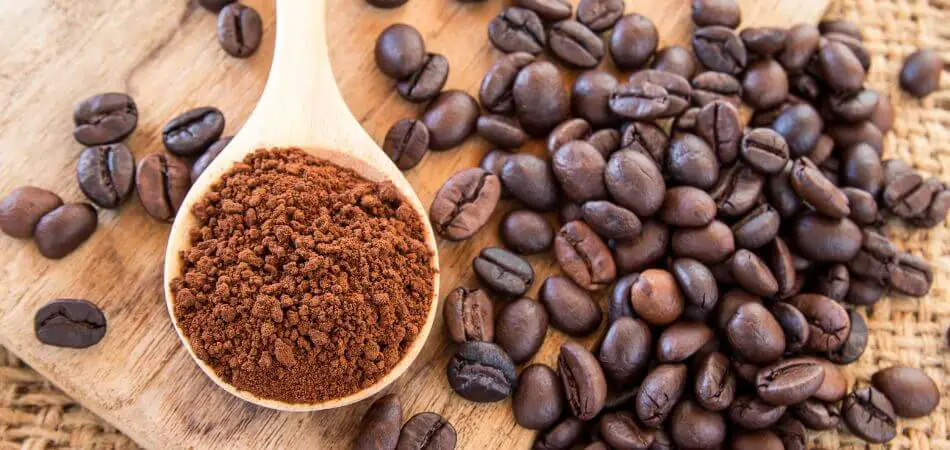The Fascinating History of Coffee
Coffee—a beverage that kick-starts mornings and fuels long afternoons—has an extraordinary history that spans centuries and continents. Did you know that over 2.25 billion cups of coffee are consumed globally each day? This staggering number is a testament to our love for this rich, aromatic drink. Yet, while many of us enjoy coffee as a daily ritual, few know about its fascinating journey from ancient legends to its place in modern society.
In this article, we’ll dive deep into the history of coffee, exploring its mythical origins, cultural significance, and how it transformed from a simple bean into the beloved brew we cherish today. So, grab your favorite cup, settle in, and join me on this flavorful journey through time!
Coffee’s Mythical Origins: The Legend of Kaldi
The story of coffee begins in the lush, green hills of Ethiopia, where legend has it that a goat herder named Kaldi made a remarkable discovery. One day, while tending to his flock, Kaldi noticed that his goats were acting unusually lively. They danced and frolicked with a burst of energy after munching on small, bright red berries from a nearby shrub. Intrigued, Kaldi decided to try the berries himself.
After eating the fruit, he too felt a surge of vitality. Excited about his find, Kaldi rushed to a nearby monastery to share his discovery with the monks. However, the monks were skeptical and dismissed the berries as a distraction from their prayers. Undeterred, Kaldi prepared a drink from the berries, which helped the monks stay awake and alert during their long hours of meditation. Word spread, and soon, these “magic” berries became popular among the locals, laying the foundation for coffee’s popularity.
Though this story is likely more myth than fact, it illustrates the enchanting beginnings of coffee and how it captured the imagination of those who first encountered it. This legendary tale paved the way for coffee to migrate beyond Ethiopia, marking the start of its journey across the globe.

The Early Use of Coffee in the Arab World
After its discovery, coffee made its way to Yemen, where it found a fertile home. By the 15th century, coffee was being cultivated on the Arabian Peninsula. The Yemeni port city of Mocha became a central hub for coffee trade, and the drink began to gain popularity among Sufi monks, who used it to stay awake during their nighttime prayers.
As coffee spread throughout the Islamic world, it became an integral part of daily life. The first coffeehouses, known as “qahveh khaneh,” emerged in cities like Mecca, Cairo, and Istanbul. These vibrant establishments quickly transformed into social hubs where people gathered to drink coffee, share stories, and engage in lively discussions about literature, politics, and philosophy. Coffee became not just a beverage, but a catalyst for conversation and community.
By the 16th century, coffee had firmly established itself as a beloved drink in the Middle East, setting the stage for its journey into Europe and beyond.
Coffee Spreads to Europe
As the popularity of coffee grew in the Arab world, it was only a matter of time before it made its way to Europe. The introduction of coffee to European shores occurred primarily through trade routes established by the Ottomans. By the 17th century, coffee had arrived in Venice, captivating the attention of the locals. Initially met with skepticism, the beverage gradually won over European elites who were intrigued by its exotic flavor and invigorating effects.
In England, coffeehouses began to spring up, earning the nickname “penny universities” because for the price of a cup of coffee, anyone could gain access to a wealth of information and engaging conversations. These establishments became melting pots of ideas, attracting intellectuals, writers, and philosophers. Figures like John Locke and Voltaire frequented coffeehouses, using them as spaces to discuss revolutionary ideas and challenge the status quo.
Countries like France and Italy also embraced coffee, with cafes becoming popular meeting spots for the artistic and intellectual elite. Famous coffeehouses such as Café Procope in Paris became legendary venues where writers and thinkers gathered, influencing the cultural landscape of Europe during the Enlightenment.
Through these coffeehouses, the drink transformed into more than just a morning pick-me-up; it became a symbol of social interaction, intellectual debate, and cultural exchange.

Coffee Meets Controversy: Banned or Beloved?
Despite its growing popularity, coffee faced its share of controversies in Europe. Some religious and political authorities viewed coffeehouses as breeding grounds for dissent, political debate, and unrest. In the mid-17th century, Pope Clement VIII was initially skeptical of coffee, calling it the “devil’s drink.” However, after tasting it, he famously declared that it was too delicious to ban, paving the way for its acceptance in Christian circles.
Throughout the years, various rulers attempted to suppress coffee. In 1675, King Charles II of England even issued an order to close all coffeehouses, fearing that they were places of conspiracy against his reign. Nonetheless, these efforts largely failed, and coffee continued to thrive as a cherished beverage.
As coffee culture grew, it became intertwined with social movements and revolutionary ideas. The coffeehouse emerged as a space for dialogue and dissent, highlighting its role not just as a drink, but as a vehicle for change and progress.
The Rise of Coffee Culture: Coffeehouses as Centers of Social Life
As the 18th century unfolded, coffeehouses solidified their status as vital centers of social life across Europe. These venues became hubs for intellectuals, artists, and merchants, fostering a spirit of collaboration and creativity. The atmosphere of these coffeehouses was electric, filled with the buzz of conversation, debate, and the aroma of freshly brewed coffee.
In Paris, Café Procope became a legendary spot where thinkers like Rousseau and Diderot gathered to exchange ideas. Meanwhile, in London, Lloyd’s Coffee House emerged as the birthplace of modern insurance, demonstrating the significant impact coffeehouses had on commerce and industry. These establishments were not just places to enjoy a cup of coffee; they were crucibles for innovation and change, contributing to the Enlightenment and the Age of Revolution.
The convivial nature of coffeehouses also made them popular among the burgeoning middle class. Here, people from various backgrounds could come together, breaking down social barriers and fostering a sense of community. The coffeehouse culture encouraged literacy and political awareness, leading to the circulation of pamphlets and newspapers that discussed current events and revolutionary ideas.
As coffeehouses thrived, they laid the groundwork for the café culture we see today. These establishments became more than just places to drink coffee; they became essential components of social life, influencing the fabric of society and fostering a shared sense of identity among patrons.

Coffee Conquers the World: Colonialism and Global Trade
As coffee gained popularity in Europe, demand surged, prompting European powers to establish plantations in colonies around the world. This expansion had a profound impact on coffee cultivation, particularly in Africa, Asia, and the Americas. The Dutch were among the first to cultivate coffee in Java, while the French established plantations in the Caribbean and South America.
In the 18th century, coffee became a major global commodity, and its trade routes flourished. Coffee was no longer just a beverage; it was a driver of economic growth and colonial exploitation. European colonial powers often relied on enslaved labor to work the coffee plantations, leading to deep-rooted inequalities and social injustices that continue to echo through history.
The dark side of coffee’s history highlights the complex interplay between its cultural significance and the realities of colonialism. While coffee brought wealth and status to many European nations, it also perpetuated cycles of exploitation and oppression in the regions where it was cultivated. This duality serves as a reminder of the ethical considerations surrounding coffee production today.

Modern Coffee Revolution: From Instant Coffee to Specialty Cafes
The 19th and 20th centuries saw significant transformations in the coffee landscape. The invention of instant coffee during World War I made coffee more accessible, allowing soldiers and civilians alike to enjoy a quick caffeine fix. Major commercial brands emerged, standardizing coffee consumption and turning it into a staple in households around the world.
However, as tastes evolved, a modern coffee revolution began to take shape. The late 20th century saw the rise of specialty coffee movements that emphasized quality, ethical sourcing, and artisanal brewing methods. Coffee aficionados began to appreciate the nuances of different beans, exploring single-origin coffees and brewing techniques that highlighted flavor profiles.
Brands like Starbucks transformed the coffee experience, bringing café culture into the mainstream and creating a global community of coffee lovers. Today, the coffee scene is vibrant and diverse, with artisan coffee shops sprouting up in cities worldwide, offering unique blends, brewing methods, and an emphasis on sustainability and fair trade practices.
Innovations such as espresso machines and pour-over brewing have further revolutionized how people enjoy coffee, leading to a heightened appreciation for this beloved beverage. The modern coffee culture celebrates not just the drink itself, but the craftsmanship and stories behind each cup.
Conclusion: From Ancient Beans to Your Morning Cup
The history of coffee is a captivating tale that weaves together myths, cultures, and social change. From Kaldi and his dancing goats to the bustling coffeehouses of Europe and the modern artisan cafés, coffee has played a significant role in shaping societies and fostering connections among people.
As you sip your coffee today, take a moment to reflect on this rich history. Remember that each cup represents centuries of tradition, innovation, and community. Whether you enjoy it as a quick morning pick-me-up or as a leisurely afternoon indulgence, you are participating in a time-honored ritual that transcends borders and generations.
Frequently Asked Questions About the History Of Coffee
When Was Coffee First Discovered?
Legend has it that coffee was discovered in Ethiopia around the 9th century when a goat herder noticed his goats became energetic after eating certain berries. These were coffee beans.
How Did Coffee Spread Globally?
Coffee spread from Ethiopia to the Arab world through trade. By the 15th century, it reached the Middle East, Persia, Turkey, and North Africa. Then, it spread to Europe and beyond in the 17th century.
What Is The Origin Of Coffee Houses?
Coffee houses originated in the Middle East in the 15th century. They became popular in Istanbul by the 16th century before spreading to Europe, where the first was established in Venice in 1645.
How Has Coffee Impacted Culture?
Coffee has greatly impacted global culture, fostering social interaction in coffee houses, influencing literature, music, and art, and becoming a critical part of many people’s daily routines worldwide.
How Has Coffee Impacted Culture?
Coffee has greatly impacted global culture, fostering social interaction in coffee houses, influencing literature, music, and art, and becoming a critical part of many people’s daily routines worldwide.
As we’ve traced the journey of coffee through the centuries, it’s clear this beloved brew is steeped in history. From ancient Ethiopian highlands to bustling global coffee shops, coffee’s story intertwines with our own.



